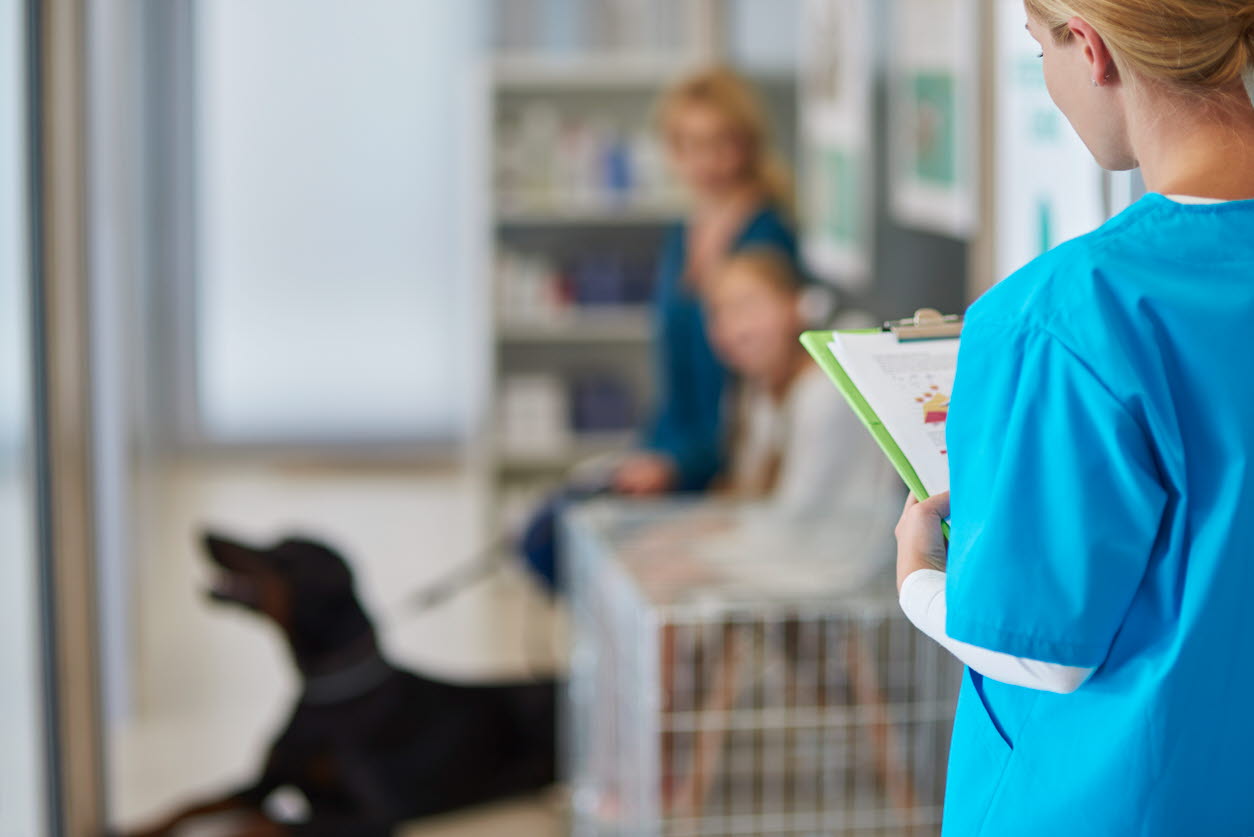A day in the life of a veterinarian

Want to know what a veterinarian does? Often the easiest way is to watch them in action. It’s a diverse and interesting profession with a lot of variety – every animal and owner is different!
Here, we look at a typical workday with veterinarian Geeta Saini, who focuses on small animals. Saini studied at the University of Queensland in the late 1970s, graduating with first class honours in 1980 and has a special interest in internal medicine.
She has been activity involved in the AVA for many years and completed a term as president of the Australian Small Animal Veterinarians (ASAV).
It’s a full day – but varied and rewarding.
5.45am
I get up, put the kettle on for the first cup of tea for the day and, I am embarrassed to admit, check my emails. For most of the year, I walk down the track next to my house to the beach with my cup of tea to check out the surf. Occasionally, I will see the sunrise, but that’s the exception – I’m not a great early morning person. I have a 24-minute drive to work, so I head off by 7am.
7.30am
I arrive at work. We open the doors at 8am, but I like to be there earlier. It gives me time to see which owners need to be contacted with pathology results, to review any of our patients that have been seen at the emergency centre (AES) over the weekend and prepare for any that will be coming back to us. I also like to follow up any cases from the week before (I work on Monday, Tuesday and Wednesday and every third Saturday morning).
Andrew Barr, our assistant veterinarian and surgeon, arrives just before 8am and his first job of the day is to make us both a cup of coffee. He’s a keeper!
8am
The three nurses rostered on Monday mornings arrive and open the doors. Officially appointments start at 8.30am, but two dog spay admissions are waiting, plus a “walk in”, a dog that couldn’t walk this morning, but seems to be running around the waiting room quite happily.
The receptionist advises the client that one of the veterinarians will see her, but we are fully booked for most of the morning.
Within the next hour the waiting room is full – the rest of the surgery cases are admitted and SMS messages are sent to clients to inform them that their blood results are in and to contact the surgery.
I see the “walk in” (a sore back that is improving now the dog has moved around) and Andrew and I start the first lot of consultations.
We like to get surgery started by 9.30am, so the surgery nurse organises the premedications, sets up the operating theatre, makes sure any pre-anaesthetic blood tests are done (she grabs one of us as we pass the prep table to take bloods), and Andrew commences the surgery day.
We always have two vets on each day and three nurses on most days. Sue Coote (my practice partner) and I each work three days a week, overlapping on Wednesdays, which is Andrew’s day off. This seems to work well.
While Andrew works through the surgery lists, I keep consulting. Mondays are usually fully booked – vaccinations, skin cases (South East Queensland is dermatology heaven), a couple of revisits to check ears, a vomiting cat that I admit to hospital for fluids and work up (bloods and x-rays) and the morning progresses. The phone never stops ringing (which is good!) and the reception nurses are flat out.
12.45pm
I finish my last consultation for the morning. By this time, Andrew is doing the X-rays, so I examine the sedated dogs with him and look at the X-rays. Two brains are always better than one. The vomiting cat’s blood tests are normal, nothing on X-ray or abdominal palpation, but I send a blood sample off for a feline pancreas-specific lipase (fPL) as well. We haven’t found any ticks and the cat has settled down now, so we’ll see what 24 hours on fluids and symptomatic treatment does for her.
The next round of consultations is double-booked from 3pm, with surgery discharges from 2.30pm. If a client rings with a case that seems urgent, we will see them before then, but ideally that break in the middle of the day gives me a chance to ring clients that need following up, discuss the blood results, update the owner of the vomiting cat, do emails, talk to our practice manager about business issues, follow up with the nurses, check emails and have lunch.
3pm
The afternoon consultations start. I show the owners of both dogs we have X-rayed the radiographs and discuss the surgical options. Andrew does tibial tuberosity advancements (TTAs) and both dogs are good candidates for this. One client books in for TTA surgery in two weeks and I send her in to talk to Andrew about the surgery. The other one has financial constraints – she will talk to her husband, but a de Angelus repair is likely.
5pm
I finish consulting, but the clinic stays open until 6pm. Tonight is my yoga night, so I check that the cat on fluids is stable (the owners elect to leave it with us rather than transferring to the AES). The nurses have everything in hand, and I check with Andrew about any problem cases and I am out the door. Tomorrow is another day.
This content was originally published by Australian Small Animal Veterinarians (ASAV), a special interest group of The Australian Veterinary Association.
